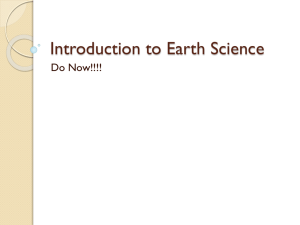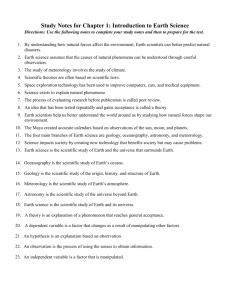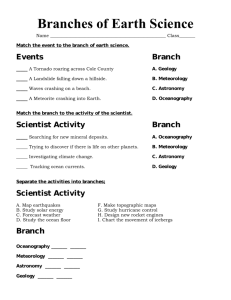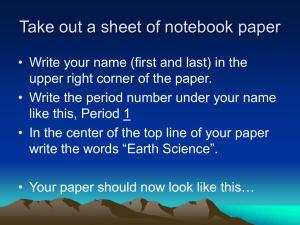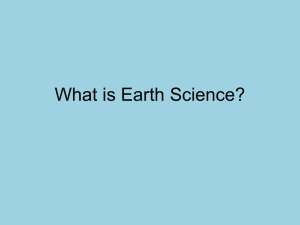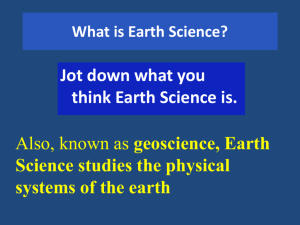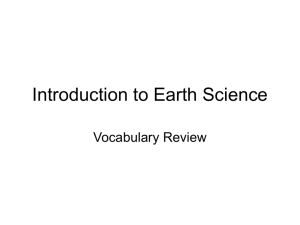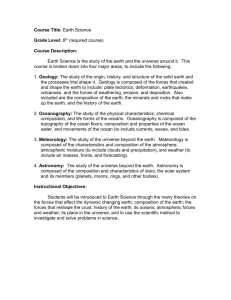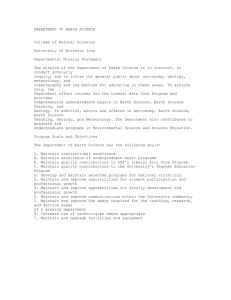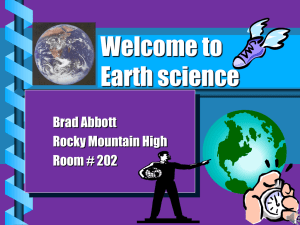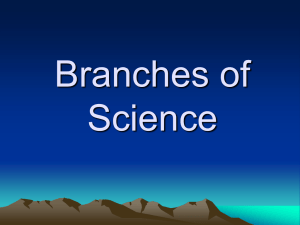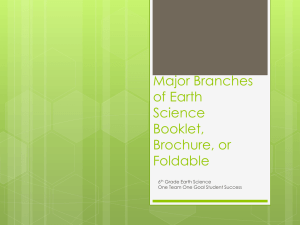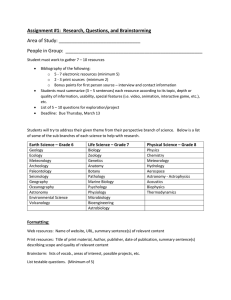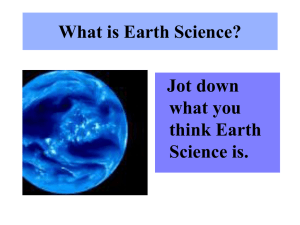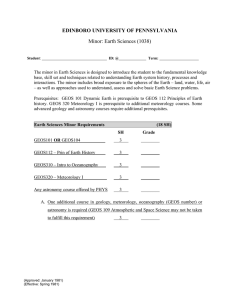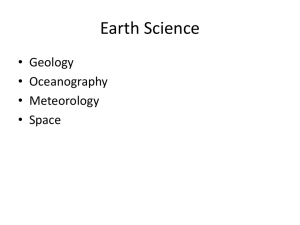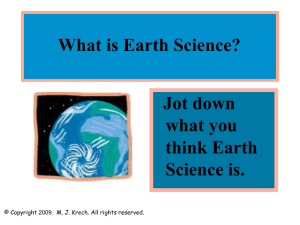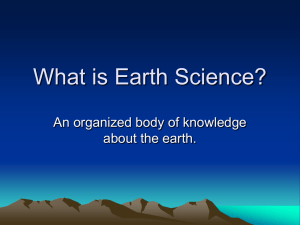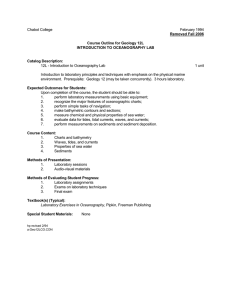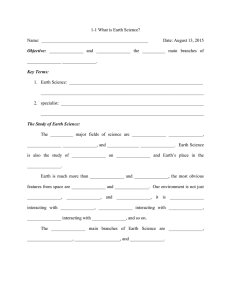Introduction to Earth Science
advertisement
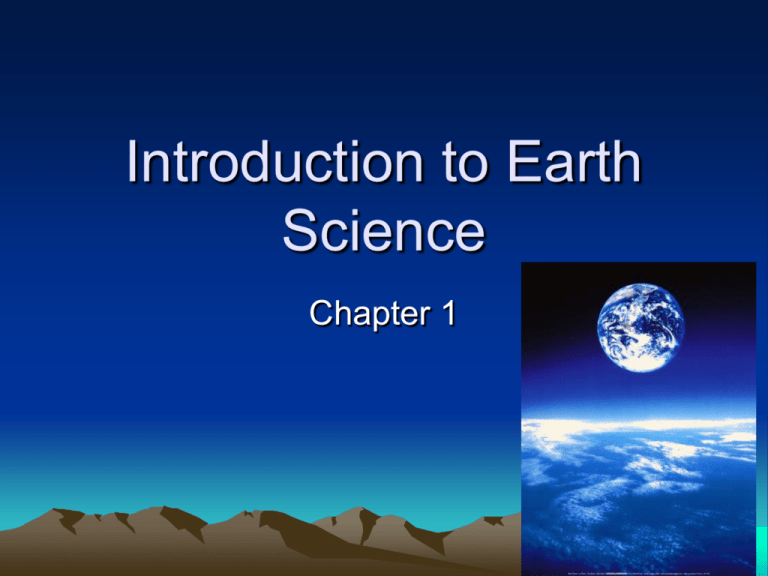
Introduction to Earth Science Chapter 1 What is Earth Science? • Earth science is the study of Earth and the universe around it • Uses observations and experimentation to discover the causes of natural events Cultural Contributions • China: kept records of earthquakes (780 BC) • Ancient Greeks: cataloged rocks and minerals (200 BC) • Mayans: tracked celestial movements Branches of Earth Science • There are four major areas of study: geology, oceanography, meteorology, & astronomy Geology • The study of the origin, history, processes, and structure of the solid Earth • Examples: volcanologist studies volcanoes Oceanography • The study of Earth’s oceans • Example: studying waves, tides, or ocean currents Meteorology • The study of Earth’s atmosphere, especially weather and climate • Examples: meteorologists use Doppler radar to track storms Astronomy • The study of the universe beyond Earth • Oldest branch of Earth Science • Example: space exploration Environmental Science • Study of the way humans interact with their environment • Example: effects of pollution, loss of biodiversity, use of natural resources The Importance of Earth Science An understanding of natural forces can help predict potential disasters • We also need to understand conservation of natural resources Science as a Process Section 1.2 Behavior of Natural Systems • • • • Scientists assume: Nature is understandable Similar forces = similar results Nature is predictable Ice Cores • Provide clues to Earth’s past climate changes • Ice cores are sliced thin and the gases they contain are analyzed Scientific Measurements and Analysis • Measurement is the comparison of some aspect of an object or event with a standard unit • The International System of Units (SI) is used worldwide (based on powers of 10) Accuracy and Precision • Accuracy: how close a measurement is to the true value of the thing being measured • Precision: the exactness of the measurement Error • An expression of the amount of imprecision or variation in a set of measurements • Expressed as percentage error or as a confidence interval Observations and Models • A model is a representation, description, or imitation of an object, system, process, or concept • Conceptual model: verbal or graphical (represents how a system works) • Mathematical model: equations Scientific Publication • Scientific results are often published in journals • Written in standard scientific format • Many journal articles are found online Peer Review • Articles are submitted for peer review before they are published • Several experts read through the article to make sure it is worthy of publication • Scientists follow a code of ethics that only valid scientific results should be published Formulating a Theory • A theory is an explanation that has been tested and supported by experimental results • Theories are based on scientific laws • Scientific laws are general statements that describe how the natural world works • Example: Law of gravity Interdisciplinary Science • The exchange of ideas between fields of science supports scientific evidence • When an explanation is supported in a variety of fields, it is more accurate • Example: meteor impact hypothesis Science and Society • Advances in science have led to the development of new machines, tools, materials, and processes • Technology that was designed for space exploration has been used to improve computers, cars, medical equipment, and airplanes Problems with Technology • New technology can lead to new pollution problems • Risks, costs and benefits must be considered • Example: drilling for oil in ANWR will cause irreversible damage to the tundra Scientific Advancements • The main goal of technology is to solve human problems
